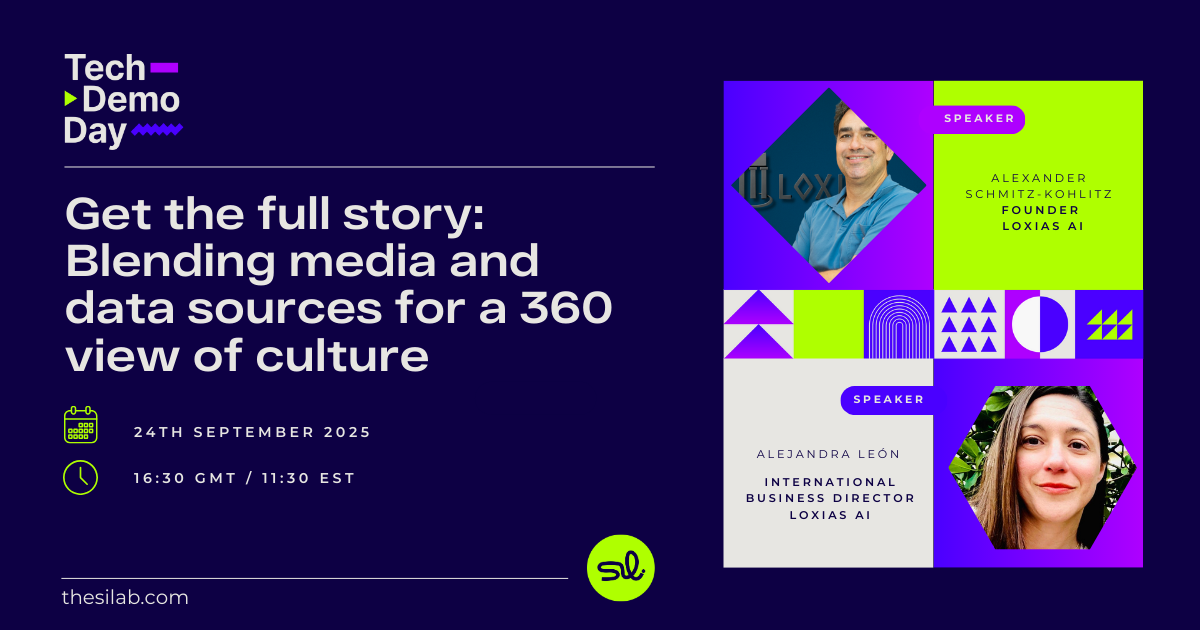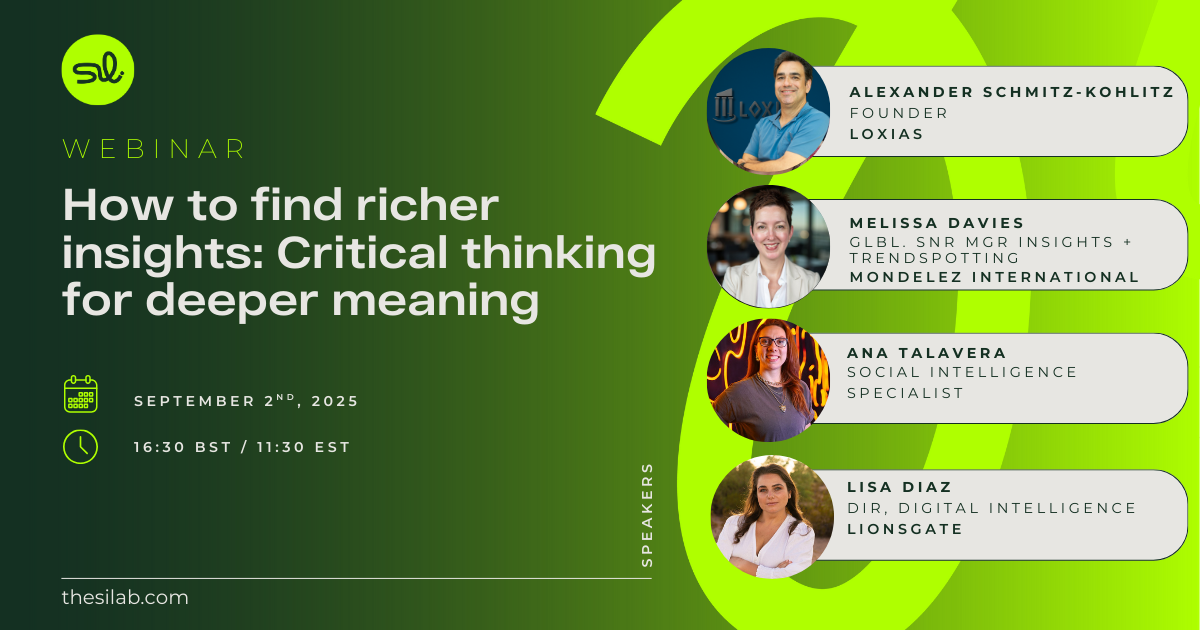
Conversational data: Moving from impact to strategy
Culture lives on the internet. People’s online conversations have real life consequences and shape cultural moments and trends. As a result, conversational data can be a valuable resource for brands to understand consumers better and then use those insights to shape their strategy.
In the presentation “Conversational data: Moving from impact to strategy,” Dr. Jillian Ney, The Social Intelligence Lab founder, walked us through the power of social conversational data and what’s currently holding back marketers from utilising it to its fullest potential.
The real world impact of online conversations and behaviours
Jillian explained that there are things going on in the deep corners of the internet that are creating more consequences in real life each year. She gave the example of how people often stop to record their moments or create their best lives. While not all of this content is 100% truthful, it does tell you a bit about the things that people aspire to. And this type of behaviour starts trends, changing how people behave in the real world.
“What’s only seen as acceptable in official videos and photo shoots has now come into the daily lives of people.”
Looking at digital sources often helps us understand “why” real world changes occur.
The tangible impact of social data
To explain the power of social data, Jillian presented a case study from 113 Industries – a Netbase Quid customer. The company was working with a failing chocolate bar with the goal to overhaul it and start shifting a product that wouldn’t budge off the shelf. They looked at Twitter, Facebook, Instagram, forums, comments, reviews, and other different types of conversational data.
The team broke down when, how, and why people were eating chocolate. They also looked at general snacking trends and preferences and found that people wanted their snacks to be indulgent. This meant they wanted their snacks to be salty and sweet. Texture-wise, it needed to be smooth, brittle, and crunchy. And it needed to have small portions, being a snack.
In some of the conversations about snacking, 113 Industries also found that people would do things like dip pretzels in chocolate. So they were combining snacks to come up with their own indulgent treat that meets all of their needs. Based on these insights, the company was able to make a new chocolate bar, which has been flying off the shelves.
“But when we look at when, how, and why people are eating chocolate, we begin to get insights that can help us create more relevant communications,” explained Jillian. So while conversational data can be used for product development, it can have a much bigger impact in other spaces too.

Existing usage and complications with conversational data
Jillian believes that conversational data can bring insights that are hard to find in other places. However, not everyone who uses it is extracting its full potential. She revealed five “secrets” that she discovered from her experiences of interviewing marketers:
1. Conversational data is used to “mark own homework” or measure the impact of a campaign or certain marketing communications. This may be the most common use of data but it’s also one of the most limiting.
2. The most common research method is desk research mainly to save time. But this isn’t always effective because the report that you use in this approach wasn’t created specifically for you.
3. Most marketers still rely too heavily on demographic information
4. Many marketers also prioritise their assumptions and experiences over actual research.
5. We analyse brand mentions and call it audience research when it’s not actually audience research.
In addition to these mistakes that marketers are still making, there are a few complications that they’re facing with conversational data:
- Lack of time and budget
- Need for tightly packed insights
- Lack of trust in conversational data
- Lack of formulated approach.
- Failing to get insights that creatives can use
Knowing what to do with conversational data
Jillian explained that there are solutions to the complications and mistakes established above. And it’s all about understanding where conversational data fits into the whole process. “Most people are using conversational data at the end of the process rather than at the start. And that has a significant impact on the value that you can bring to your business,” she explained.
To learn more about this topic in detail, you can download the three e-books that Jillian has co-authored with Netbase Quid: Insightful Agencies: How conversational data can transform today's digital agency, Insights for Communications and Putting Conversational Data to Work.
This interview was recorded via LinkedIn Live, if you prefer to view on LinkedIn, click the button below.
View InterviewSee related content
.png)








.jpeg)


